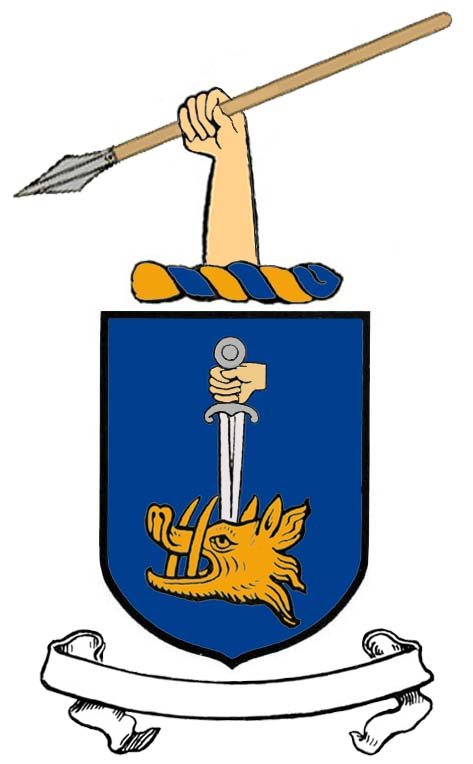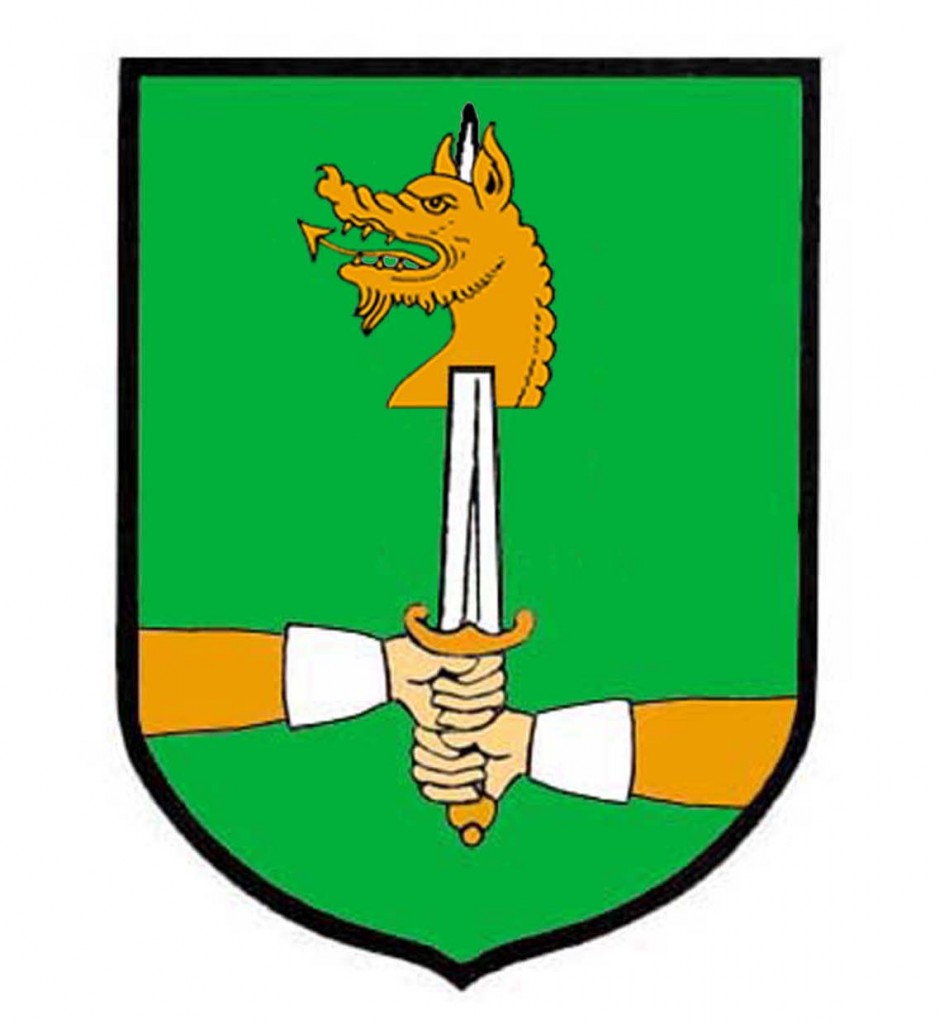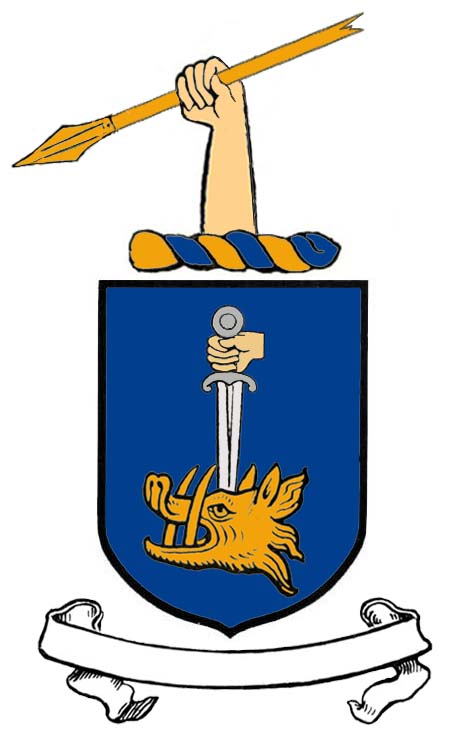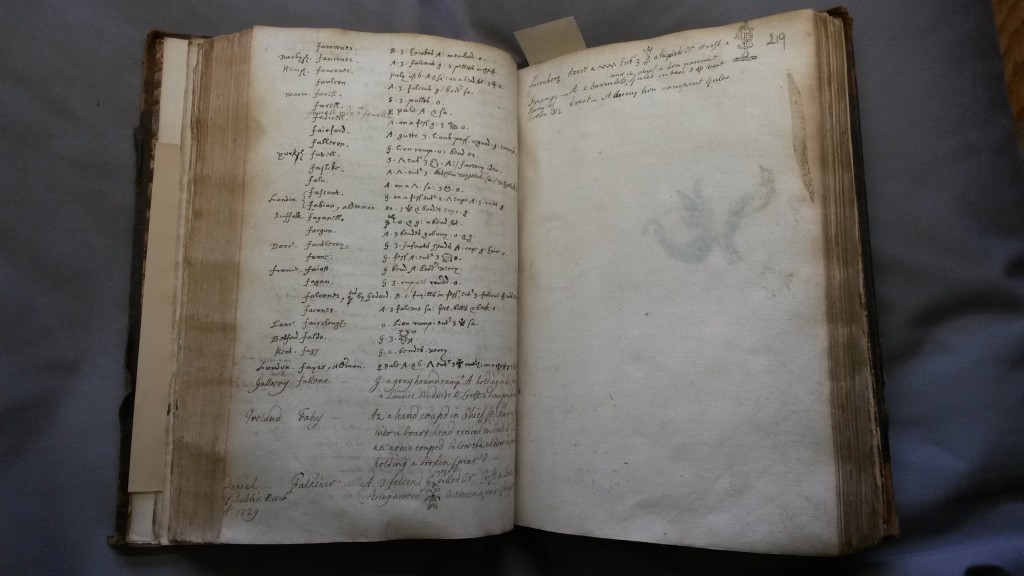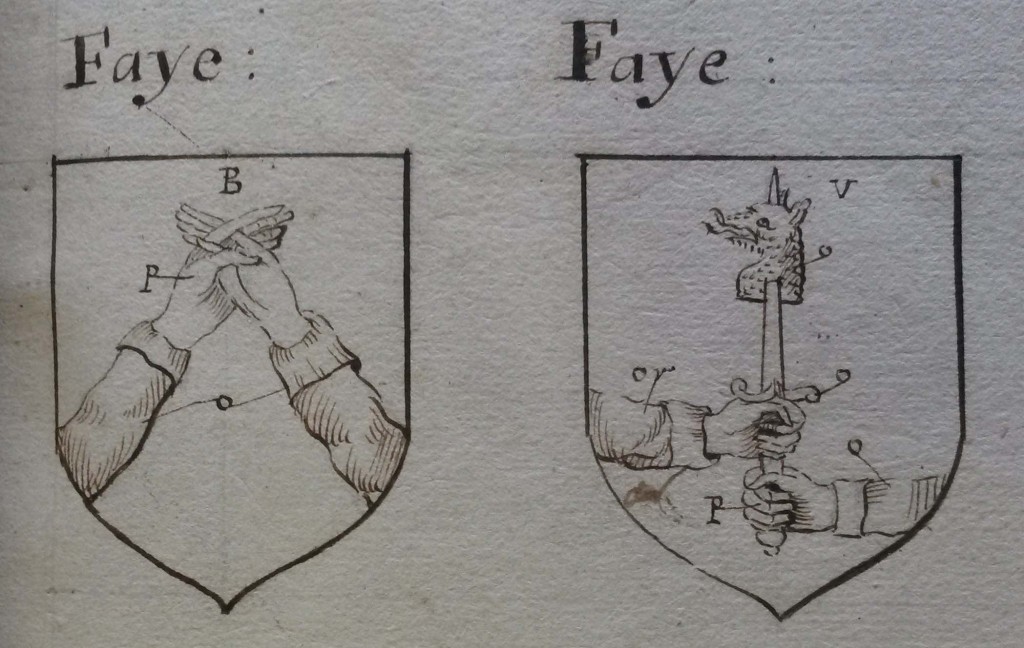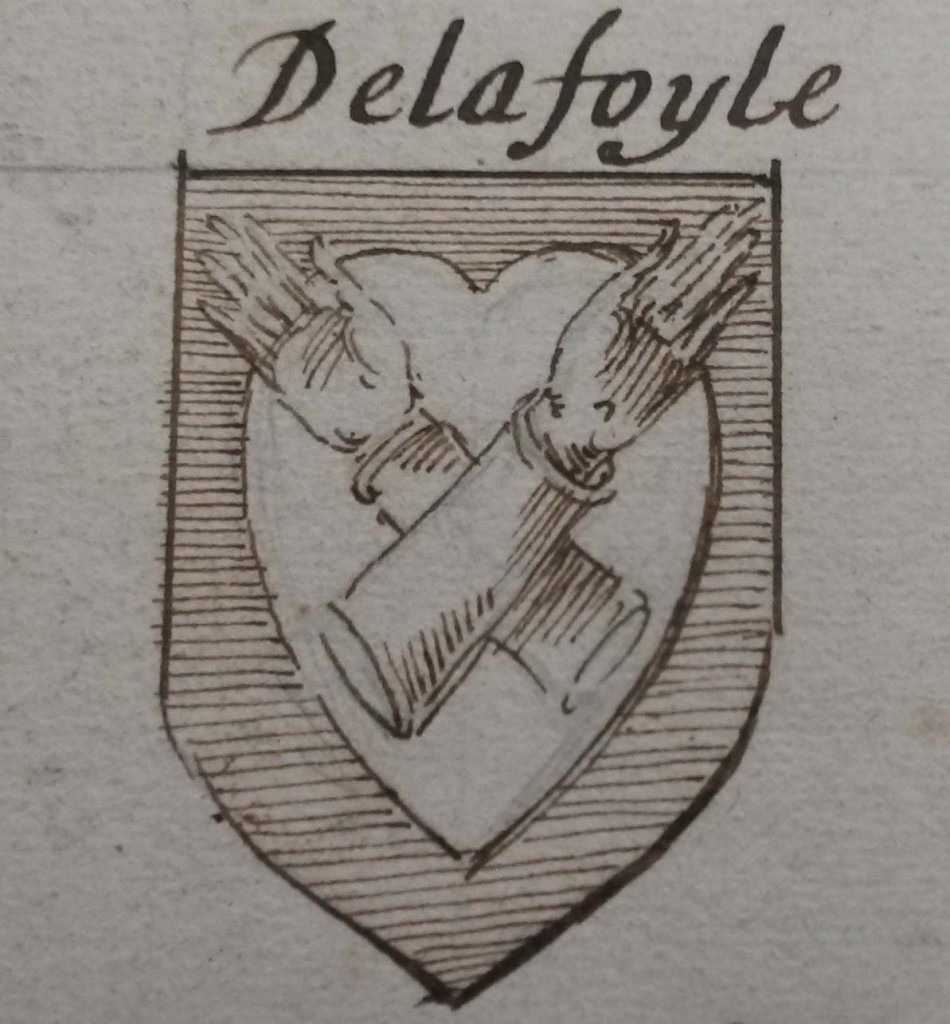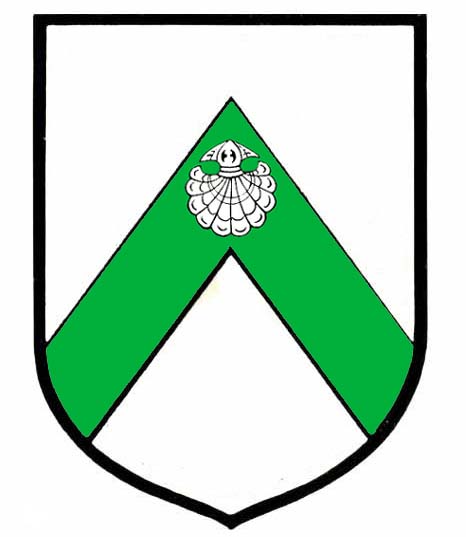© Donal G. Burke 2016
Dr. Edward MacLysaght in his ‘Irish Families, Their Names, Arms and Origins’ stated that Fahy is ‘almost exclusively a County Galway name, though it is also to be found in the areas bordering that county, such as north Tipperary and in Dublin.’[i] He described them as ‘a sept of the Ui Maine, with the centre of their patrimony being Loughrea and more specifically the area formerly known as Pobal Mhuintir Ui Fhathaigh (ie. the country of the people of O Fathaigh).’ The nineteenth century antiquary John O Donovan however, was more circumspect and less assured in assigning to the O Fahys a descent from the wide Uí Maine kin-group of families. Writing in the early nineteenth century, he stated that it is possible, that, having adopted the surname O Fathaigh after the tenth century, they may have been the descendants of the ‘tribe’ called the Cineal Fathaigh but did not say for certain.
The O Fahys maintained a minor presence in County Galway. Their ancestral lands in 1585 were described as Pobbill Moyntirffachie comprising seven quarters of land about the parish of Kilthomas. While various members of the family were landed proprietors in the late 1630s, almost all of those who owned lands lost ownership of those lands in the Cromwellian confiscations of the mid seventeenth century, with the exception of one Teige O Fahy who was confirmed in his ownership of lands in the denomination of Clounmanagan in the parish of Kilbeacanty in the late seventeenth century under the Acts of Settlement following the restoration of the monarchy.
Monsignor Jerome Fahey in his ‘History and Antiquities of the Diocese of Kilmacduagh’, states that Cluonmanagan or Clonimonigan ‘are the lands now known under the general name of Cloon’ in the parish of Kilbeacanty, in the vicinity about which a family of the name appears to have survived into at least the early nineteenth century. (The modern translation in the Irish language of the townland of Cloon is given as ‘Cluain Uí Maonagain’.) Thady Fahy ‘of Clooningane, County Galway, gentleman’, entered into a deed of lease and release of a considerable portion of his estate with Dominick Burke of the city of Dublin and Joseph Burke ‘late of Ballylee, County Galway’ on 1st May 1711. Monsignor Fahey was of the view that the deed was ‘practically a mortgage at a ruinous interest on the townlands of Cloon and Cloonaningane, containing 105 profitable Irish aces in the barony of Kiltartan’.[ii] In December of the following year the mortgage was taken up by Edward Eyre of Galway. Monsignor Fahey noted that, in the meantime, ‘Burke pressed his claim for the payment of the amount of the original mortgage’ in the knowledge that Fahy was unable to pay at that time. As a consequence, Thady Fahy ‘felt himself obliged to confirm to Edward Eyre 114 profitable Irish acres in Cloon and elsewhere on condition that Eyre would satisfy Burke’s claim. There was a provision for the lands to be redeemed but the terms were onerous, with the entire principle and interest to be repaid by Fahy within six months. One year later, in 1713, Eyre advanced a further loan of £50 to Fahy, the nature of which suggested to Monsignor Fahey that, by that stage, ‘the last remnant of his paternal estates had passed away from his hands without hope of redemption.’ In December of 1713 Thady Fahy of Cloone, County Galway, together with Edward Eyre of Galway, in consideration of the sum of £450 granted one John Scardeville of Dublin an annuity of £36 per annum charged on the lands of Cloone in the barony of Kiltartan.[iii] The identification of Thady Fahy as ‘of Clooingane’ and also as ‘Cloone’ suggests that he was of the same family as that Teige O Fahy confirmed lands there under the Acts of Settlement in the 1670s. According to Monsignor Fahey, writing in 1893, the Lahiff family of Gort House, who were then in possession of Cloon House, acquired the same by purchase from a Mr. Eyre.
Another of this same family would appear to have been Francis Fahy senior, Esquire, who made his will in 1808.[iv] His rank of ‘esquire’ and a connection with the significant landed proprietor Hubert Thomas Dolphin of Turoe, County Galway (who, together with the testator’s wife, acted as his executor) would suggest that this Fahy family still retained a certain social albeit minor landed status in their locality at that time. From his will the lands of Francis Fahy senior lay in the townlands of Ballyeighter and Calfhill in the barony of Kiltartan, the former in the parish of Kilbeacanty and the latter a local place-name in the adjoining parish of Kilthomas. In that will he assigned his lands in Ballyeighter and Calfhill to a trustee for the use of his son Francis Fahy, junior for life with remainder to his eldest son and every other son in taile male. In default of male issue of Francis junior’s sons the property was assigned for the use of his widow Catherine Fahy alias Burke for her natural life and after her death to Hubert Thomas Dolphin of Turoe for life, with remainder to his eldest son and every other son. His interest in a tenement ‘on the Athenry Road’ and its furniture he left to his wife. Also mentioned were his brother James Fahy and sisters Eleanor and Belinda. Given this family’s apparent position as the sole surviving family of the name to have retained a degree of social standing in the region about Kilbeacanty and County Galway into the early 1800s, it is likely that they were the senior-most family to have survived the Cromwellian transplantations as minor landed gentry then resident in Ireland.
The earliest surviving record of a grant or confirmation of arms in the records of the Ulster King of Arms to an identifiable individual of the name Fahy relates, however, to an armiger established in the West Indies. In his grant of arms dated 3rd May 1825, Rear Admiral Sir William Charles Fahie K.C.B. was described as ‘of an old and respectable family of the Province of Connaught in Ireland.’ [v] He was given in that grant as son of Judge John Davis Fahie, President of the Council of Tortola, son of Anthony Fahie of the Island of St. Christophers in the West Indies. The arms granted to Rear Admiral Fahie, his descendants and the others descendants of his grandfather, ‘according to the Laws of Arms,’ comprised ‘Azure, a dexter hand couped in chief thrusting a sword Proper into a boar’s head erased in base Or.’ For crest, on a wreath of the colours; a dexter arm couped below the elbow, grasping a javelin, the point downwards Proper.’[vi] The arms were granted without motto.
Arms granted by Sir William Betham, Ulster King of Arms to Rear Admiral Sir William Charles Fahie K.C.B., his descendants and the other descendants of his paternal grandfather, after those exemplified in Genealogical Office Ms. No. 106, fol. 157-8.
This Fahie family were settled in the West Indies since the late seventeenth century. Rear Admiral Fahie was born in 1763 at Saint Kitts, Leeward Islands and after a distinguished career in the Royal Navy, died in January 1833 in Bermuda. His father John Davis Fahie, born in 1730 on the island of St. Christopher, a judge of the Admiralty Court and president of His Majesty’s Court at Tortola, died in 1785. John Davis Fahie’s father Anthony Fahie was born sometime about 1690 at St. Kitts. He acquired two hundred acres on St. Kitts in 1712 and, after the death of his first wife, as Colonel Anthony Fahie, he married Elizabeth Molineux in 1730. He had children by both wives, his son John Davis being the son of his second marriage. He died in March of 1738. Little is known of Anthony Fahie’s father other than he is believed to have been named Anthony and been the first of his family to settle in the West Indies.
While the claim to descent of an old Connacht family appears have been the tradition within the family in the early nineteenth century or may have been known with certainty by the early nineteenth century members of Rear Admiral Fahie’s family, there is no established line between the Rear Admiral’s grandfather and earlier named individuals in Ireland. As such the connection with the O Fahys of Pobal Mhuintir Ui Fhathaigh in County Galway is based only on that family being, though of a minor presence, the most prominent of the name in Connacht.
The arms granted to Rear Admiral Fahie were similar to those ascribed earlier to an unspecified armiger of the surname ‘Fahy’ in Roger O Ferrall’s collection of Irish genealogies entitled ‘Linea Antiqua.’ The depiction was hatched and, without an accompanying blazon, the only tincture that can be taken with certainty from the sketch is that of an Azure field. The field was charged with a hand couped at the wrist fessways in chief holding a sword paleways the point downward pierced through a boar head erased in base. The crest, on a wreath, was depicted as a naked arm erect couped below the elbow holding a broken spear point downwards. O Ferrall’s work is dated 1709 but no source is given for his attribution of those arms to Fahy.
There is a distinct similarity between the arms given by O Ferrall as those of Fahy in the early eighteenth century and those borne by representatives of the surname Faye or Fay in the late sixteenth and early seventeenth century. Given the similarity between the Faye arms and those of Fahy in surviving records, it would appear likely that the composition of one of these two families is based in part upon the arms of the other. Similar situations occurred with other Irish names, which have seen those of O Hannon, of Gaelic origin in east Galway, attributed arms at one time by heralds based on those of the Hanham family of England, despite having earlier borne distinct arms bearing no similarity to those of Hanham. In a similar manner those of the name Madden, whether of Gaelic origin in east Galway, of Waterford origin or of ‘New English’ origin, were attributed arms carrying similar compositional elements.
Although there are some rare instances of Fay being used as a variation of Fahy, the former occurs more properly as a surname of separate origin to that of Fahy.[vii] Dr. MacLysaght in his ‘Irish Families’ described the Fays as of Anglo-Norman origin and established at an early stage in County Westmeath. The senior family of the name Fay he gave as seated at Ballymoon, County Kildare.[viii] On the death in 1629 of Melior or Melcior Faye of Ballymoon in County Kildare, details relating to his family and his arms were recorded in the ‘Funeral Entries’ of the office of the Ulster King of Arms. His arms were described at that time as ‘Vert, a dexter arm issuant from the sinister side of the shield and a sinister arm from the dexter, vested Or, cuffed Argent, the hands Proper, grasping a sword erect of the third, pommel and hilt of the second, the blade thrust through a dragon’s head couped of the last.’ The same arms, ascribed to the name ‘Faye’, were depicted in an alphabet of arms among the records of Ulster’s Office, identified as Genealogical Office Manuscript No. 37 Irish Arms ‘A’, dating from the last years of the sixteenth or early years of the seventeenth century. A note was later affixed to the manuscript stating that the few Irish arms therein were, for the most part, but not solely, those of settlers of Old English origin. The shield depicted tricked in Genealogical Office Ms. no. 37 was more or less identical to that given in Melcior Faye’s Funeral Entry of 1629 but with droplets of blood issuing from the dragon’s head.
Arms of Faye of Ballymoon, County Kildare, after those given in the ‘Funeral Entry’ dated 1629 of Melcior Faye. The variation on the arms of Faye, as exemplified in G.O. Ms. 37, also occurred in the impaled arms of the wife of one Colonel Hamilton, formerly ‘Mrs. Faye.’ Buried at Dunboyne church ‘with scocheons’ on 1st April 1718, the arms of Faye impaled with that of Hamilton depicted in her Funeral Entry shows droplets of blood Gules issuing from the dragon’s head. (N.L.I. Dublin, G.O. Ms. 79, Funeral Entries Vol. 17 c. 1619-1729, p. 245.)
The earliest arms recorded by the Ulster King of Arms tended to be those of peers, prominent Gaelic chieftains and representatives of families of Old or New English origin settled in or about the Pale, none of which categories would apply to the O Fahys of east Galway. The arms of Faye occur about the beginning of the seventeenth century or a decade earlier in the records of the Ulster King of Arms. The arms associated with the name Fahy were said by Sir John Bernard Burke, in the 1884 edition of his ‘General Armory of England, Scotland, Ireland and Wales,‘ to have appeared in what was a copy of Smith’s Ordinary of Arms maintained in the office of the Ulster King of Arms, the original of which is believed to date from about the end of the sixteenth century. According to Burke, that copy of Smith’s Ordinary of Arms gave the arms associated with individuals of the surname Fahy as ‘Azure, a hand couped in chief, sticking a sword Proper into a boar’s head erased in base Or’ and gave the associated crest as ‘an arm couped below the elbow in pale Proper holding a broken spear Or.’
The arms given as those of an unidentified Fahy in the 1884 edition of ‘The General Armory of England, Scotland, Ireland and Wales,’ the source of which was given by Sir John Bernard Burke, Ulster King of Arms, as a copy of ‘Smith’s Ordinary’ in Ulster’s Office.
Smith’s Ordinary of Arms is a compilation of blazons of arms compiled about the latter years of the sixteenth century by William Smith, who served from 1597 to 1618 as Rouge Dragon Pursuivant of Arms at the College of Arms in England. Burke’s description of the occurrence of the arms associated with the name Fahy in a copy of Smith’s Ordinary inadvertently creates the misleading impression that those arms may date from the latter years of the sixteenth or the earliest years of the seventeenth century, while in fact they would appear to date from a later period.
There are two surviving manuscripts referred to as copies of Smith’s Ordinary in the records of the Genealogical Office in Dublin, originating in the records of the office of the former Ulster King of Arms. One, entitled Genealogical Office Manuscript number 63, appears to be a copy of Smith’s Ordinary, in which no reference occurs relating to an armiger of the name Fahy. In the other surviving manuscript, known as Genealogical Office manuscript no. 62, Gerald Slevin, Chief Herald of Ireland, inserted a note in 1955 stating that this manuscript was in fact an ‘Alphabet of Arms’ and not, as written therein, ‘Smith’s Ordinary of Arms.’ In the same handwritten note, Slevin posed the question as to whether this was rather a copy of William Smith’s Alphabet of Arms, dated 1604, the original of which is found in Harleian Manuscript no. 5798.[ix]
Genealogical Office Manuscript number 62 bore the signature of Richard Carney, who held the position of Ulster King of Arms on two occasions, during the Cromwellian period from 1655 to 1660 and again, under the monarchy, alongside George Wallis, from 1683. This manuscript is now officially entitled ‘A book called Smith’s ordinary of arms, bearing the inscription ‘Richard Carney his book Exdone’ and, taking its wider title from Slevin’s written remarks, notes that it contains an Alphabet of blazons of English and some Irish families and possibly a copy of William Smith’s Alphabet of Arms 1604. The same title notes that the body of the manuscript appears to be transcribed about 1640, with additions in a hand of about 1710. These additions are accounted for in part by Thomas Ulick Sadleir, last Acting Ulster King of Arms, who also inserted a note in the manuscript to the effect that a number of later additional blazons at the end of each letter of the alphabet relate to grants made by Ulster Kings of Arms whom he simply identified as ‘Carney and Hawkins.’
The additions to which Sadleir made reference appear to have been inserted for the most part from the early decades of the eighteenth century, with a small number from the early nineteenth century which would post-date Carney or Hawkins. This manuscript (G.O. Ms. 62) gives the blazon of the arms of ‘Fahy of Ireland’ as identical to that to which Burke made reference, but this blazon was inserted at the end of those appearing under the letter ‘F’ and was by a later hand than that which wrote the main body of the manuscript. It appears to have been written in the eighteenth century and, as such, may relate to a grant of arms by Carney or Hawkins. (It should, however, be noted that not all entries in a later hand relate to grants by Carney and Hawkins, and Sadleir’s note does not take into account the fact that most blazon’s in a later hand describing a family as ‘of Gallway’ are evidently derived directly from the mid to late seventeenth century map of Galway town, including as it does such surname forms as ‘Morech of Gallway’ and ‘Labarth of Gallway,’ name forms which are only associated with the town on that same map.)
The last entries under the letter ‘F’ in Genealogical Office Ms. No. 62, including that of Fahy, given simply as ‘of Ireland’ in a later hand to that of the principal body of the manuscript. © National Library of Ireland.
Detail of blazons inserted at the end of those under the letter ‘F’ in Genealogical Office Ms. No. 62, showing that of ‘Fahy of Ireland.’ © National Library of Ireland.
Three generations of Hawkins served as Ulster King of Arms, beginning with William Hawkins, who served from 1698 to 1722. While Sadleir did not identify the particular Hawkins by whom the grants later added to the Alphabet of Arms were made, all served in that office in the eighteenth century, thereby dating the grant of arms to an armiger of the name Fahy in Ireland to a period no later than the eighteenth century. It would appear likely, however, that the insertion of the Fahy blazon may have been made by the first Hawkins Ulster King of Arms. A comparison of the entry relating to ‘Fahy of Ireland’ and entries relating to families described as ‘of Gallway’ in G.O. Ms. 62 with entries written by William Hawkins Ulster King of Arms in 1708 and 1715 in G.O. Ms. 84 and G.O. Ms. 87 would suggest that the handwriting of the ‘Fahy’ entry in G.O. Ms. 62 was in the hand of the same William Hawkins Ulster King of Arms who served in that office from 1698 to 1722 or in a similar hand. No record of the original grant by Carney or Hawkins to an armiger by the name of Fahy has survived or come to light and, if such a grant was made, it is therefore not possible to identify the original Irish grantee.
While it is likely that a family of Anglo-Norman origin would have first borne arms at an earlier date than one of Gaelic origin, it cannot be said with absolute certainty whether those of Faye or Fahy are earlier. The earliest dateable surviving record of arms relating to an armiger of the name Fahy in Ireland would appear to be that recorded by O Ferrall in his 1709 ‘Linea Antiqua.’ As it was untricked, it is uncertain if its tinctures were identical to that granted by Carney or Hawkins. It is also unclear if O Ferrall’s image was based upon that grant or if Carney’s or Hawkin’s grant was based upon an earlier non-surviving source upon which O Ferrall also drew. However, given the earlier occurring record of the arms of Faye and the reference to a later grant by Carney or Hawkins it is likely that Faye may have pre-dated Fahy and that the composition of the former arms may have inspired or informed the Ulster King of Arms regarding the composition of the latter arms.
Sir John Bernard Burke, when compiling the blazons for his General Armory of 1884 drew heavily upon a manuscript in Ulster’s Office later known as Genealogical Office manuscript No. 82, which comprised a compilation of some 2,400 tricks of arms of Irish families. The arms in this manuscript are believed to have been compiled between 1706 and 1730 and did include two different arms of two families named Faye. The same tricked arms of both families of Faye appeared side by side in another compilation of tricked arms known as Genealogical Office Ms. no. 61, believed to have been compiled circa 1665. Burke appears to have relied solely on G.O. Ms. no. 62 for the arms of Fahy, however, as neither G.O. Ms. 82 or G.O. Ms. 61 contained a reference to arms relating to a family named Fahy.
While the arms of one of the families of Faye in G.O. Mss. 82 and 61 are identical to the arms of Faye of Ballymoon, the other arms are those of an unidentified family named Faye and were given as ‘Azure, issuing from the base of the shield, a dexter and sinister arms chevronways, vested Or, hands proper, fingers crossed.’ It may be noteworthy that a common element in both arms of Faye are a dexter and sinister arm with hands meeting.
Arms of two families of Faye, shown tricked in G.O. Ms. no. 82. © National Library of Ireland.
Guy Cadogan Rothery in his ‘Concise Encyclopaedia of Heraldry’ explains that, in Continental heraldry, the composition of a dexter and sinister hand issuing from the flanks or sides of the shield, the hands clasped in the fess point, is known as ‘foi’ or ‘faith’, suggesting ‘brotherly love.’ He informs us that this composition may be displayed in the form of a fess, that is, a horizontal composition across the shield or in various other arrangements such as ‘in bend’ or ‘in chevron’.[x] This composition involving a pair of hands or arms is a common element among a number of those of the name Purefoy and a dexter and sinister arm appear in saltire also in the arms of certain of the name Delafoy or Delafoyle in the records of Ulster’s Office.[xi] The same compositional approach also occurs in French arms, with L’Armorial Général de France recording hands clasped in the armorial bearings of Leonor Foy, canon of the Cathedral Church of Beauvais, north of Paris, at the end of the seventeenth century.[xii] While Faye is a separate and distinct surname to that of Foy or similar, it is noteworthy that the arms of Faye shares similar compositional elements as those occurring in Foy and similar-sounding names. While it is uncertain, it may suggest the origin of the dexter and sinister arms that occur in the arms of Faye and possibly as an indirect consequence the hand clasping the sword in the arms of Fahy.
Arms of Delafoyle from G.O. Ms. no. 82. © National Library of Ireland.
Fahy of Lyons
The arms of another of the name Fahy, one Jean Fahy, ‘Architecte et Bourgeois de la ville de Lyons,’ occurs in the archives of the Bibliothèque Nationale in Paris, among documentation relating to various families of Irish origin settled for the most part in France.[xiii] The arms in this case, registered in Lyons as those of Jean Fahy between 1697 and 1709, bore no similarity to the composition of other earlier arms associated with either Fahy or Faye and comprised a shield Argent on a chevron Vert an escallop of the first.[xiv] His name was given as ‘Jean Fahi’ in the seventeenth volume of L’Armorial Général de France but no other information other than his profession and status was associated with the armorial register entry or in the documentation relating to Irish families in the Bibliothèque Nationale to identify with certainty the origin of this Jean Fahy.
Arms of Jean Fahi or Fahy after those depicted in L’Armorial Général de France.
Copy of the certificate of registration of arms of Jean Fahy of Lyons, recorded in the archives of the Bibliothèque Nationale in Paris among documentation relating to various families of Irish origin settled for the most part in France. © National Library of Ireland.
The Armorial Général was intended as a record of arms borne by all armigers, communities, corporations, secular and Church bodies throughout the realm of the French king and was instituted in 1696 by edict of King Louis XIV in part to raise funds for his wars. All of those whose arms were registered were liable to pay a registration fee. Fines would be levied on all armigers found avoiding registration and, in an effort to widen the tax base, also upon all those declared by the heraldic authorities as capable of bearing arms but who had never previously borne arms or would not normally have been entitled to bear arms. Included among those who had never previously borne arms nor desired arms but for whom the heraldic officials registered arms were merchants, bourgeois, artisans and others. By their inclusion in the register they became liable for unwanted fees. Registration of arms continued from 1697 to 1709 and in various regions the arms assigned by the heraldic officials to those newly created, and in many cases reluctant, armigers were often variations on a similar theme. Numerous variations upon an escallop on a chevron, involving alterations in tincture of the field, ordinary or charge, occurred in those arms registered in Lyons and the appearance of Jean Fahy’s arms among those would suggest that his arms were newly created by the heraldic authorities as a result of the 1696 edict and subsequent resultant contemporary decrees.
Arms of Jean Fahi or Fahy, architect of Lyons, as depicted in L’Armorial Général de France, in the context of other arms of similar composition.
[i] MacLysaght, E., Irish Families, Their Names, Arms and Origins, Fourth Edition, Dublin, Irish Academic Press, 1985, pp. 83-4.
[ii] Fahey, J., The History and Antiquities of the Diocese of Kilmacduagh, M.H. Gill & Sons, Dublin, 1893, pp. 254-6, 355-6.
[iii] Eyre of Eyreville Family and Estate Papers, in possession of author, Untitled Ledger containing notes by W.S.W. Eyre written circa 1950, p. 181.
[iv] Ellis E. & Eustace PB, Registry of Deeds, Dublin Abstracts of Wills, Vol. III, 1785-1832, IMC, Dublin 1984, pp. 235-6.
[v] NLI, Dublin, G.O. Ms. 106, fol. 157-8.
[vi] NLI, Dublin, G.O. Ms. 106, fol. 157-8.
[vii] MacLysaght, E., Irish Families, Their Names, Arms and Origins, Fourth Edition, Dublin, Irish Academic Press, 1985, p. 190.
[viii] MacLysaght, E., Irish Families, Their Names, Arms and Origins, Fourth Edition, Dublin, Irish Academic Press, 1985, p. 190.
[ix] NLI, Dublin, G.O. Ms. 62. Arms, A, no. 2, p. 218.
[x] Cadogen Rothery, G., Concise Encyclopedia of Heraldry, Senate, London, 1994, p.89. (First published as ABC of Heraldry, Stanley Paul & Co., 1915).
[xi] NLI, Dublin, G.O. Ms. 82, p. 41, Delafoyle; NLI, Dublin, G.O. Ms. 61, p. 92, Delafoy.
[xii] Bibliothèque Nationale de France, Paris, Dept. des Manuscrits Francais, 32244, bnf.fr., Volumes Relies du Cabinet des Titres: recherches de noblesse armoriaux, preuves histories généalogiques. Armorial Général de France, dressé en vertu de l’édit de 1696 par Charles d’Hozier (1697-1709), III, Paris, p. 11. The armiger would appear to be Leonor Foy de Saint-Hilaire, priest, doctor and canon of the cathedral church of S. Pierre de Beauvais in the late 1690s.
[xiii] NLI, Dublin, Pièces Originales: Papers relating to the history and genealogy of members of various families of Irish origin in France, 17th and 18th centuries, microfilm copies of originals in the Bibliothèque Nationale, Paris, n.546, p.133, No. 25,140. Fahy.
[xiv] NLI, Dublin, Pièces Originales: Papers relating to the history and genealogy of members of various families of Irish origin in France, 17th and 18th centuries, microfilm copies of originals in the Bibliothèque Nationale, Paris, n.546, p.133, No. 25,140. Fahy; Bibliothèque Nationale de France, Paris, Dept. des Manuscrits Francais, 32244, bnf.fr., Volumes Relies du Cabinet des Titres: recherches de noblesse armoriaux, preuves histories généalogiques. Armorial Général de France, dressé en vertu de l’édit de 1696 par Charles d’Hozier (1697-1709), XVII, Lyons, (‘Dixseptiesme Volume de l’Armorial Général, Cotté L.4, Lion’) p. 233. No. 161.


